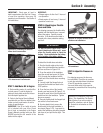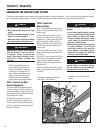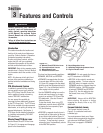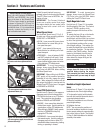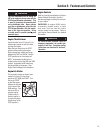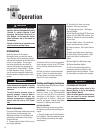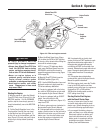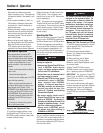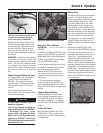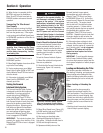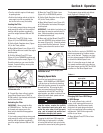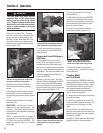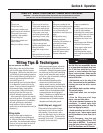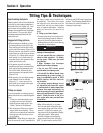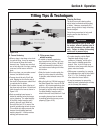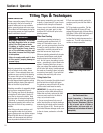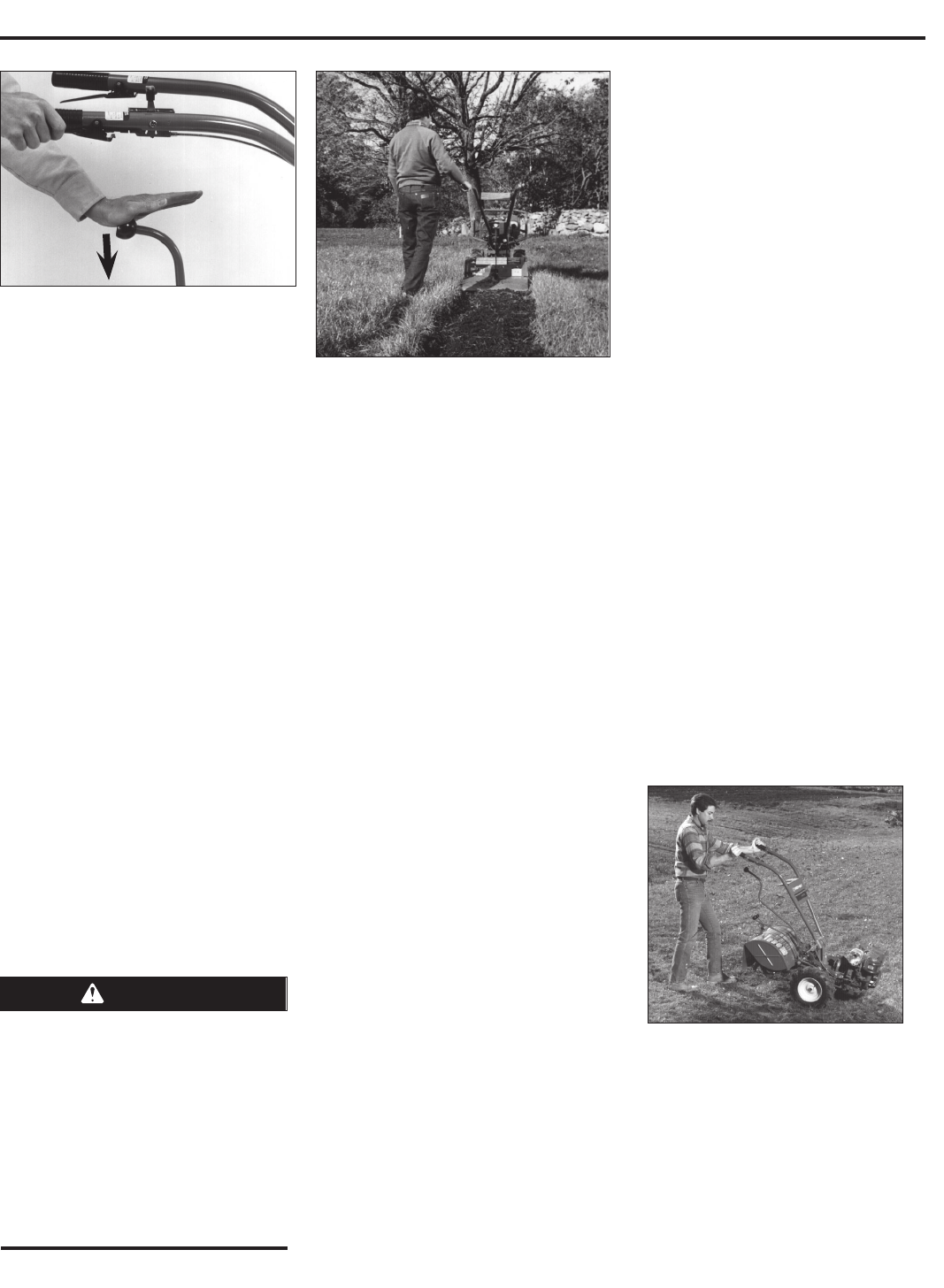
Section 4: Operation
6. When the tiller moves forward, relax
and let the wheels power the tiller along
while the tines dig. Walk behind and to
one side of the tiller. Walk on the side
that is not yet tilled (Figure 4-4). Use a
firm grip on the handlebars but keep your
arm relaxed.
IMPORTANT: Let the tiller move ahead at
its own pace. Do not push it ahead—this
reduces operator control and tilling effi
-
ciency. Do not push handlebars down
in an attempt to dig deeper— this takes
weight off the wheels, reduces traction,
and causes the tines to try to propel the
tiller.
Stopping Forward Motion and Tines
1. To stop forward motion, tap Wheels/
Tines/PTO Drive Lever upward into
NEUTRAL. Then release the Forward
Interlock Levers. The wheels and tines
will stop and the engine will continue
running.
2. In an emergency, release all of the
control levers. This stops forward motion
and shuts-off the engine.
Moving the Tiller in Reverse
IMPORTANT: Do not till while in
REVERSE.
1. Shift the Tines/Wheels/PTO Drive Lever
(Figure 4-2) into NEUTRAL and move the
Wheel Speed Lever to the SLOW position.
2. Move Tines/PTO Clutch Lever (Figure
4-2) into DISENGAGE position.
3. Verify that the area behind you is clear.
4. Lift up the handlebars until the tines
are off the ground, then shift the
Wheels/Tines/PTO Drive Lever all the
way up and hold. You do not need to
squeeze the Forward Interlock Levers to
use reverse.
5. The unit immediately engages in
reverse. Periodically check behind you
while holding the handlebars up and the
Wheels/Tines/PTO Lever in its upper-most
position.
Stopping Reverse Motion
Release the Wheels/Tines/PTO Drive
Lever– the lever automatically returns
to the NEUTRAL position. This stops
the wheels immediately. (The Forward
Interlock Levers will not stop REVERSE
motion.)
To Stop the Engine
Move the engine Throttle Lever to the
STOP position. Then, on electric start
models, turn key to OFF. Remove the key
for safekeeping.
Making Turns
Turning the tiller is easy and just requires
practice. First find the balance point
between the engine and the tines by lifting
up the handlebars (Figure 4-5). Once
you find the balance point, then let the
powered wheels do the turning as you
push sideways on the handlebars in the
direction of the turn. Practice the turning
maneuver described here in a large open
area. Once comfortable turning the tiller,
you can then take it to the garden area.
1. At the end of a row, move the Wheels/
Tines/PTO Drive Lever (Figure 4-2) to
NEUTRAL position and reduce the engine
speed.
2. Move the Tines/PTO Clutch Lever
(Figure 4-2) into the DISENGAGE position.
3. Resume forward operation, and lift
handlebars until tines are off the ground
(Figure 4-5). Find the balance point
between the engine and the tines. Then
push the handlebars in the direction of
the turn. Be very careful to keep feet and
legs away from the tines (which should be
disengaged). Let the powered wheels do
the hard work. The inside wheel will pivot
in place while the outside wheel drives the
tiller around in the direction of the turn.
NOTE: Use REVERSE if necessary to turn
in a limited space.
17
Figure 4-4: Guide tiller with one hand.
Figure 4-3: Moving tiller forward:
squeeze one Forward Interlock Lever
and then move Wheels/Tines/PTO
Drive Lever down to FORWARD.
To Help Avoid Personal Injury or
Damage to Equipment:
• Be sure no obstacles are behind you
before operating the tiller in REVERSE.
• Disengage the tines, reduce
engine speed, and move the Wheel
Speed Lever to SLOW position before
operating in REVERSE. Avoid using
FAST wheel speed until you are familiar
with backing the tiller.
CAUTION
Figure 4-5: Turning the tiller.



